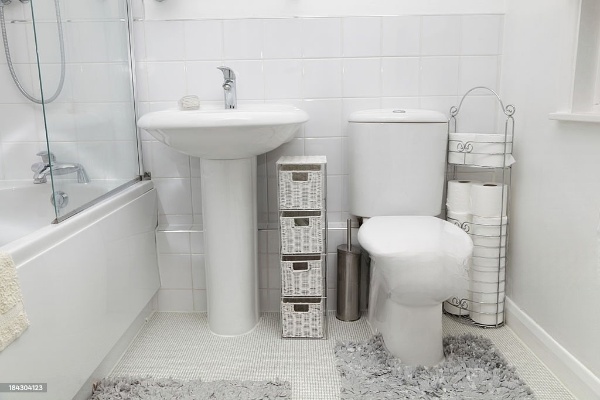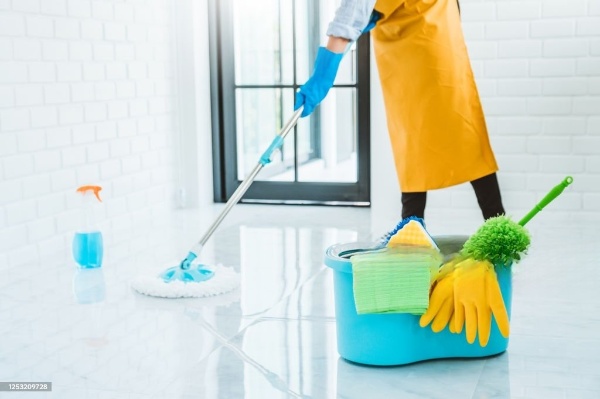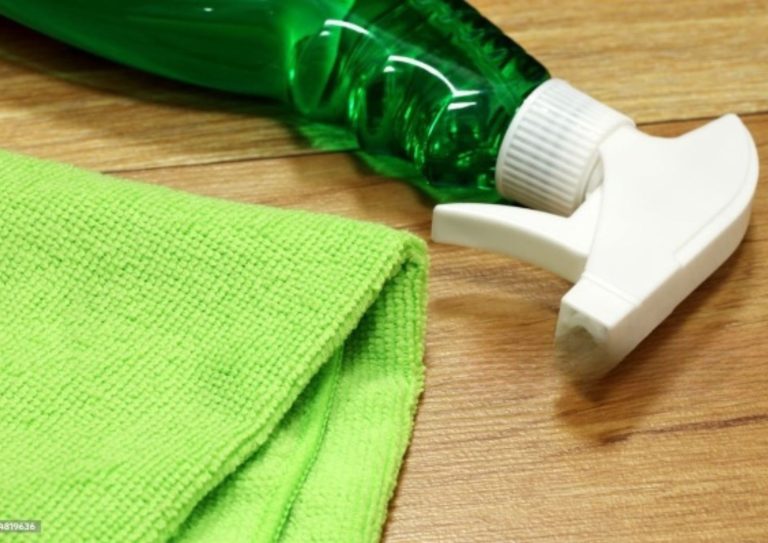Keeping your home clean and organized can feel overwhelming, but it doesn’t have to be. With a well-structured whole-house cleaning schedule, you can maintain a tidy home without feeling stressed or overburdened. In this guide, we’ll walk you through creating a customized cleaning routine that fits your lifestyle and ensures every part of your home stays sparkling clean.
Photo by Tima Miroshnichenko: https://www.pexels.com/photo/people-wearing-orange-coveralls-6195129/
Why You Need a Cleaning Schedule
The simplest way to keep your home reliably clean is to stick to a cleaning schedule. A well-planned routine helps you stay ahead of the mess, reduces stress, and ensures that your home remains a pleasant environment. By breaking down tasks into manageable steps, you can avoid the chaos of last-minute cleaning frenzies.
Step-by-Step Guide to Creating Your Whole-House Cleaning Schedule
Step 1: Prepare Your Plan
Begin by walking through your home with a clipboard and pen, noting down the cleaning tasks for each room. This comprehensive inventory will serve as the foundation of your cleaning schedule.
Photo by cottonbro studio: https://www.pexels.com/photo/person-holding-orange-click-pen-writing-on-notebook-3201468/
Step 2: Categorize Your Rooms
List all the rooms and areas that need regular cleaning, such as the kitchen, bathrooms, living spaces, hallways, and entryways. Exclude spaces like storage or guest rooms from your regular routine and clean them seasonally or as needed.
Photo by Mark McCammon: https://www.pexels.com/photo/kitchen-and-dining-area-1080721/
Step 3: Identify Essential Cleaning Tasks
For each room, write down all necessary cleaning tasks. Arrange them from top to bottom, reflecting the order you’ll follow when cleaning. Here’s a basic checklist to get you started:
All Rooms
- Dust light fixtures and ceiling fans
- Clean door handles and dust doorframes
- Dust blinds, windowsills, picture frames, and furniture
- Shake out throw rugs
- Sweep, vacuum, or mop floors
Kitchen
- Clean and sanitize counters and sink
- Clean stove, oven, and range hood
- Wipe down cabinet fronts and appliances
- Clean microwave inside and out
Bathrooms
- Clean mirrors
- Clean and sanitize counters and sink
- Wipe down cabinet fronts
- Clean and sanitize toilet
- Clean and sanitize shower, shower door, and tub
Photo by Karolina Kaboompics: https://www.pexels.com/photo/crop-person-cleaning-glass-shower-unit-4239091/
Step 4: Gather Your Supplies
Having the right cleaning supplies on hand is essential for an efficient and effective cleaning routine. Not only does it save time, but it also ensures that you can tackle any cleaning task as it arises. Here’s a detailed look at how to gather your supplies:
Assess Your Current Supplies
Start by taking an inventory of the cleaning supplies you already have at home. This can include all-purpose cleaners, glass cleaners, disinfectants, mops, brooms, dusters, vacuum cleaners, microfiber cloths, sponges, and scrub brushes. Utilizing what you already own can save you money and reduce waste.
Make a List of Necessities
Based on the cleaning tasks you’ve identified, create a list of any additional supplies you might need. For example, if you don’t have a suitable cleaner for your hardwood floors, add that to your list. Remember to include any specialty items, such as a stainless steel cleaner for appliances or a grout brush for bathroom tiles.
Opt for Multipurpose Cleaners
Whenever possible, choose multipurpose cleaners that can be used on various surfaces. This minimizes the number of products you need to buy and store, making your cleaning routine more streamlined and less cluttered.
Stock Up on Essentials
Make sure you have an ample supply of essential items like paper towels, garbage bags, and cleaning gloves. Running out of these basics mid-cleaning can interrupt your flow and cause unnecessary delays.
Consider Eco-Friendly Options
If you’re environmentally conscious, look for eco-friendly cleaning products. Many natural cleaners, such as vinegar, baking soda, and lemon, can be effective and safe alternatives to chemical-based products. They are also often less expensive and readily available.
Organize Your Supplies
Keep your cleaning supplies organized and easily accessible. Use a cleaning caddy or a dedicated shelf in a closet to store your items. This way, you can quickly grab what you need and move from room to room without wasting time searching for supplies.
Maintain Your Cleaning Tools
Regularly check and maintain your cleaning tools to ensure they are in good working condition. Replace worn-out sponges, empty vacuum bags, and launder reusable cloths. Well-maintained tools perform better and make your cleaning tasks easier.
Photo by Anna Shvets: https://www.pexels.com/photo/plastic-bottles-and-cleaning-supplies-for-washing-5218014/
Step 5: Determine Cleaning Frequency
Deciding how often each room needs to be cleaned is a crucial step in creating an effective cleaning schedule. Here’s a more detailed discussion to help you determine the best cleaning frequency for different areas of your home:
High-Traffic Areas
High-traffic areas like the kitchen and bathrooms require frequent cleaning due to their constant use and exposure to dirt, grease, and bacteria. These spaces should be cleaned at least once a week to maintain hygiene and prevent the buildup of grime.
Kitchen: Since the kitchen is used daily for meal preparation, it tends to get dirty quickly. Wipe down counters, clean appliances, and sanitize sinks weekly. Depending on usage, you might need to mop the floor more frequently.
Bathrooms: Bathrooms are another high-use area that needs regular attention. Clean and sanitize the toilet, sink, and shower weekly. Additionally, wipe down mirrors and surfaces to keep the bathroom looking fresh.
Medium-Traffic Areas
Rooms that are used regularly but not as intensively as kitchens and bathrooms, such as living rooms and dining areas, can be cleaned less frequently. A biweekly cleaning schedule is often sufficient to keep these spaces tidy.
Living Room: Dust furniture, vacuum carpets, and clean any electronic equipment biweekly. This helps to keep dust and allergens at bay while maintaining a welcoming environment.
Dining Room: Wipe down tables and chairs, dust light fixtures, and clean floors biweekly. If you have a formal dining room that is used less frequently, a monthly cleaning schedule might be adequate.
Low-Traffic Areas
Low-traffic areas like bedrooms and home offices, which are used primarily by individuals and see less dirt and mess, can be cleaned on a biweekly or even monthly basis.
Bedrooms: Dust surfaces, vacuum floors, and change bed linens biweekly. If the bedroom is used infrequently, a monthly cleaning might suffice. Regular decluttering can also help maintain a clean and peaceful sleeping environment.
Home Office: Dust furniture, clean electronic devices, and vacuum floors biweekly. Keeping a tidy workspace can improve productivity and reduce stress.
Seasonal and As-Needed Cleaning
Some areas of your home, such as storage rooms, guest rooms, and outdoor spaces, do not require regular cleaning. Instead, incorporate these into your schedule on a seasonal or as-needed basis.
Storage Rooms and Guest Rooms: Clean these spaces before and after they are used. For storage rooms, an annual deep cleaning is usually sufficient to keep them organized.
Outdoor Spaces: Depending on your climate, outdoor areas may need cleaning at the start and end of the season. Sweep patios, clean outdoor furniture, and wash windows as needed.
Step 6: Choose Your Cleaning Style
Select a cleaning method that suits your lifestyle:
- One-and-Done: Clean the entire house in one day.
- Timed Sessions: Set a timer for short cleaning sessions on designated days.
- Room-by-Room: Assign specific days to clean specific areas.
Photo by Karolina Kaboompics: https://www.pexels.com/photo/crop-unrecognizable-person-in-yellow-gloves-cleaning-white-surface-4239035/
Step 7: Implement Your Schedule
Start your cleaning routine and treat the first month as a trial period. Adjust your schedule as needed based on what works best for you.
Photo by Ann H: https://www.pexels.com/photo/pink-cards-on-leafy-background-1989820/
Step 8: Stay Consistent
Print out your task list and place it in a visible area. Schedule your cleaning times on a calendar and stick to them. Don’t be too hard on yourself if you miss a day; simply adjust and continue.
Photo by Karolina Kaboompics: https://www.pexels.com/photo/crop-woman-dusting-lamp-during-housework-4239031/
Step 9: Review and Adjust
At the end of each month, review your cleaning schedule. Identify any challenges and tweak your routine to better suit your needs.
Step 10: Develop Good Habits
Enhance your cleaning routine with these habits:
- Use a cleaning caddy to carry supplies from room to room.
- Do quick spot cleanings with wipes to maintain cleanliness between scheduled cleanings.
- Declutter regularly to make cleaning easier.
Photo by Polina Tankilevitch: https://www.pexels.com/photo/plastic-bottle-over-pink-rubber-gloves-4440521/
Conclusion
A whole-house cleaning schedule tailored to your lifestyle can transform your cleaning routine from a daunting task to a manageable, stress-free activity. By following these steps and staying consistent, you can enjoy a consistently clean and organized home.
FAQs
How often should I clean high-traffic areas?
High-traffic areas like the kitchen and bathrooms should be cleaned at least once a week to maintain hygiene and cleanliness.
What if I can’t stick to my cleaning schedule?
If you miss a cleaning day, don’t stress. Reschedule your tasks and continue with your routine. Flexibility is key.
Can I use natural cleaning products?
Yes, natural cleaning products are effective and safer for your health and the environment. Vinegar, baking soda, and lemon are great natural cleaners.
How do I motivate myself to clean regularly?
Setting a timer for short cleaning sessions can make the task feel less overwhelming. Additionally, keeping a printed schedule visible can serve as a constant reminder.
What’s the best way to handle clutter?
Incorporate decluttering into your routine. Spend a few minutes each day putting things away to prevent clutter from accumulating.


